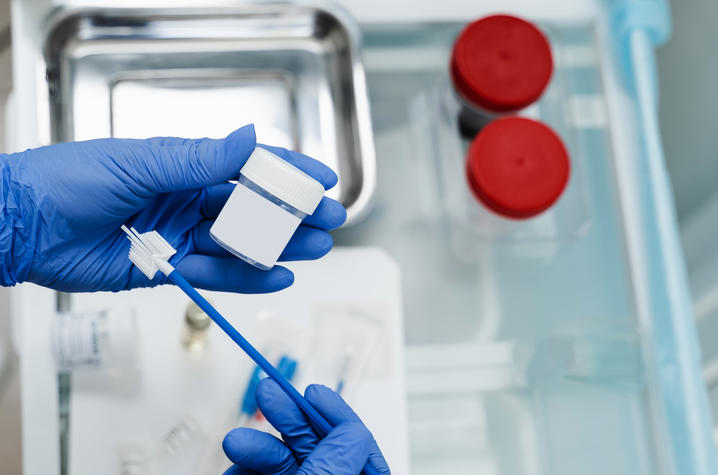UK study reveals concerning decline in cervical cancer screenings

LEXINGTON, Ky. (June 25, 2024) — New University of Kentucky research published in JAMA Network Open reveals concerning declines in cervical cancer screening rates among women in the U.S. during the COVID-19 pandemic, especially in rural areas.
The study led by UK Markey Cancer Center researcher Ty Borders, Ph.D., analyzed nationally representative survey data from the National Cancer Institute to examine Pap test screening rates before and during the pandemic. A Pap test (or Pap smear) is a screening method that can detect cervical cancer or cell changes that may lead to cervical cancer, allowing for early detection and treatment.
Results showed that the odds of a woman receiving a Pap test in the past year were 30% lower in 2022 compared to 2019, before the pandemic began.
The substantial decline is concerning, given that cervical cancer is largely preventable with regular screening and early intervention says Borders, a professor in the UK College of Nursing and director of the Rural and Underserved Health Research Center.
The study also found increased disparities in screening rates between rural and urban women. In 2022, only 48.6% of rural women reported receiving a Pap test in the past year, compared to 64% of urban women.
Women from rural areas have historically had higher rates of cervical cancer incidence and mortality, so a widening urban-rural gap in screening during the pandemic is particularly troubling, Borders says.
“The findings point to a need to expand access to cervical cancer screenings among all women, but especially those residing in rural areas, to prevent a possible uptick in future cervical cancer incidence and mortality,” said Borders.
Disruptions to health care services during COVID-19 lockdowns likely contributed to the declines in screening, as many clinics temporarily suspended or scaled back routine procedures like Pap tests.
Based on the results, health care providers may want to consider extra measures to ensure patients are up to date with recommended screenings, including expanding the availability of appointments for cervical cancer screenings and reminding patients of screening due dates.
This program is supported by the Federal Office of Rural Health Policy (FORHP) of the Health Resources and Services Administration (HRSA) of the U.S. Department of Health and Human Services (HHS) as part of an award totaling $2,800,000 with 0% financed with non-governmental sources. The contents are those of the author(s) and do not necessarily represent the official views of, nor an endorsement, by HRSA, HHS, or the U.S. Government. For more information, please visit HRSA.gov.
As the state’s flagship, land-grant institution, the University of Kentucky exists to advance the Commonwealth. We do that by preparing the next generation of leaders — placing students at the heart of everything we do — and transforming the lives of Kentuckians through education, research and creative work, service and health care. We pride ourselves on being a catalyst for breakthroughs and a force for healing, a place where ingenuity unfolds. It's all made possible by our people — visionaries, disruptors and pioneers — who make up 200 academic programs, a $476.5 million research and development enterprise and a world-class medical center, all on one campus.




